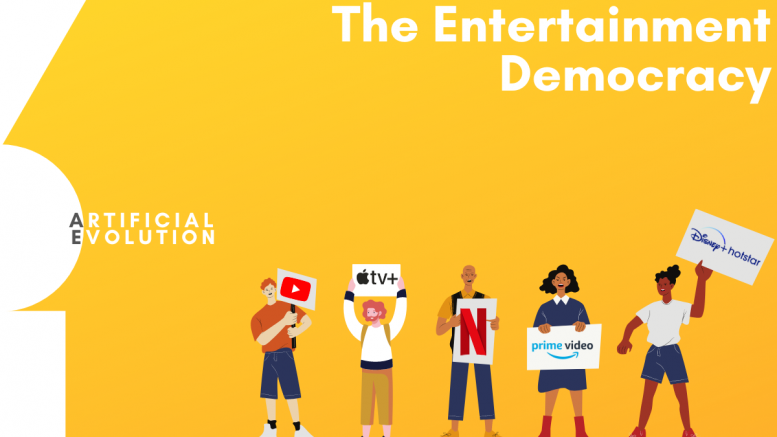Let’s indulge in a thought experiment:
When was the last time had a started a conversation with “What you watching these days?”
Probably less than a week?
Usually, the best conversation starter (and a tip to know if someone is a weirdo) is to ask them what they watch on Netflix or Amazon Prime or Disney + Hotstar or whatever your current kink is. Surprisingly, after the boom of the streaming platforms, there is more to the Indian viewer than Naagin or Sasural Simar Ka – even the new Netflix ad plays on this phenomenon.
Streaming platforms have changed an important thing about viewing – not only have they made choices diverse but also more personal.
The Elements of Changed Content Preferences
Although the pandemic has re-shaped our preferences, the choices had been evolving even before the pandemic struck us as OTT platforms superseded traditional television. Two primary driving forces that drove audiences to the OTT platforms were: –
- Relatable or Believable Stories
There was an inclination for “realistic” storylines as opposed to the formerly preferred larger-than-life or unrealistic plots. Although one could argue that this trend has continued with bizarre scenes in Indian TV serials however, these shows are not known for their “immersive stories” but are rather thought of more as cringe content. Contrarily, the content on streaming platforms offered a plethora of stories that are closer to the life of people and also addressed the layered problems of our society.
- So Many Genres
Catering to the evolving needs of the new viewer, streaming platforms vastly diversified their content catalogue with a host of genres. The motivation for the streaming platforms is clear – to accommodate the tastes of every viewer no matter how distinct they might be. Owing to this diversified availability, if an individual is immensely fond of say action thrillers, he or she has the option to spend all their time watching just this one genre across platforms.
The increased consumption is also a cause of stress for the streaming platforms and they will have to try to stay away from the rut of creating monotonous content simply to grab eyeballs. Additionally, where television is often a family viewing experience, OTT platforms are more individualistic in nature and so the content expectations from the TV are a lot different from those on streaming platforms. Here are the two categories that are booming on streaming platforms: –
Local Content
The concept of “local” has been evolving. OTT has shrunk or merged the language borders and, in a country, as diverse as ours, this presents a brilliant opportunity for content creators. Viewers are greatly preferring regional language shows in Gujarati, Telugu, Bengali, Punjabi, etc. A survey by the FCCI claims that consumption of regional language content on OTT platforms will reach 50% by 2025 – even surpassing Hindi content with consumption of the latter being 45%. The reason behind this change is attributed to a predictive surge in digital content consumption in smaller towns. These audiences prefer to watch content in their regional language.
Global Content
Stories are bringing the world closer and OTT platforms are the bridge to exploring and experiencing different cultures. With a transformation in our content preferences, we have become global audiences. Shows such as Money Heist, originally Spanish or Squid Games which is Korean are amongst the top 10 most viewed shows in India. This is because the entertainment industry is witnessing some dramatic transformations through the “glocalization of entertainment”. As our exposure to media has increased, streaming platforms have started to treat audiences as global viewers while at the same time being sensitive to their characteristic preferences. While this duality is challenging to adapt to, it will be fascinating to witness how the OTT platforms continue to engage their viewers.
In closing, despite the transformed content preferences the media and entertainment industry players cannot help but wonder whether these preferences are temporary or here to stay. With limited attention spans and money to spend, OTT platforms and the TV will have to compete with other entertainers with a burgeoning fan-base: video games, music streaming, and spending time on social media. The next wave of digital disruption is sure to be designed around the best ways to connect with the audiences – it will be exciting to see it unfold.
And at the end of all that, it’ll still take us 42 minutes to decide what to watch on Netflix.
Stay curious. Stay secure.
See you next week.
The views and opinions published here belong to the author and do not necessarily reflect the views and opinions of the publisher.



Be the first to comment on "The entertainment democracy"